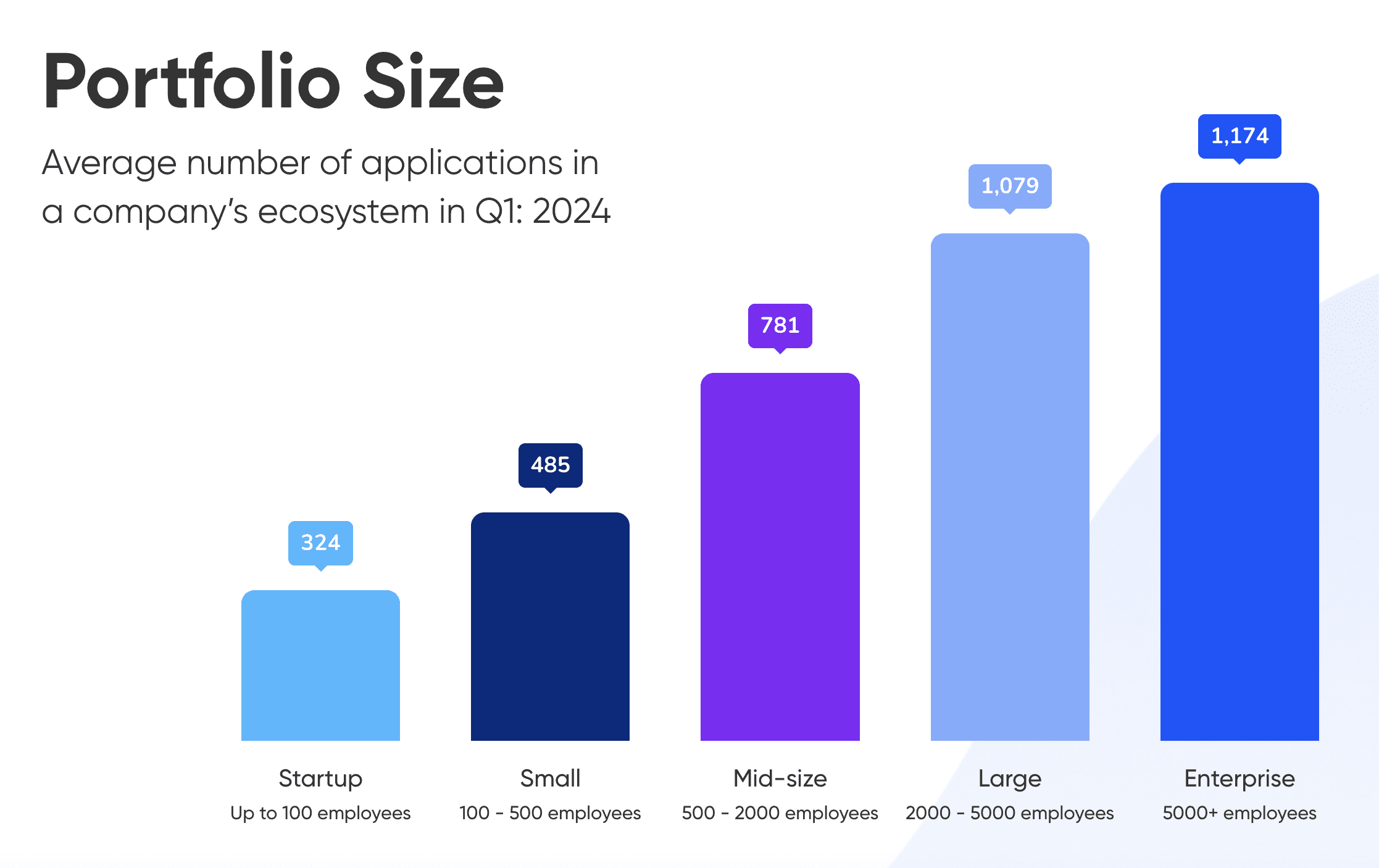The hidden costs of SaaS and how to avoid them
There is a SaaS for everything, accessible from anywhere and at any time, but at what cost? Software-as-a-service platforms are convenient, easy to use, and might appear cheap at first. However, SaaS spending can get out of hand quickly and remain unnoticed. As much as 60% of IT leaders are reported to be unaware of all cloud applications used in their organisation.
Don’t get me wrong. SaaS applications are essential. Getting this article written and published involved using at least five SaaS platforms: a certain online word processor, a writing assistant, an SEO tool, a graphic design platform, and a content management system.
The benefits of SaaS and its growing popularity are indisputable. Startups and SMEs used on average between 324 and 781 applications in Q1 2024. At the same time, 66% of those applications had no active users in the last 30 days.
What is “subscription creep”?
Subscription creep happens when a business accumulates multiple SaaS tools over time without realising the total financial impact. As teams independently add new subscriptions or upgrade existing ones, costs gradually increase, often without a thorough evaluation of whether these tools are still needed or are being fully utilised. This slow build-up of recurring costs can significantly drain the budget, especially when overlooked.
How to avoid subscription creep
Many businesses unknowingly (or knowingly) bear the burden of underutilised SaaS, which leads to significant hidden costs. Small-to-medium-sized businesses are particularly vulnerable to subscription creep. Unlike large enterprises with dedicated IT and procurement teams, SMBs often lack oversight and visibility into SaaS spending.
1. Unused Features
Problem: Many companies subscribe to premium SaaS plans that offer a wide array of features, but often, only a few of them are actively used. This underutilisation results in paying for features that don’t provide any value, driving up costs unnecessarily. By failing to match plan features to actual needs, businesses waste money on functionality they don’t even require.
Solution: Assess if the current subscription level matches actual usage regularly. Use a free version (if available) or downgrade the subscription, if not fully utilised.
2. Duplicate Tools
Problem: In bigger organisations, it’s common for different teams to independently purchase SaaS tools with similar or overlapping functionalities. The classic example is when Jira is used for project management by technical teams, while Trello – by marketing and sales teams. This duplication drives up costs by paying for multiple services that essentially do the same thing. Without a coordinated approach, these redundant tools go unnoticed, adding layers of complexity and unnecessary expense.
Solution: Identify and consolidate the tools with similar or overlapping functionalities. Develop a company-wide strategy to oversee SaaS usage across all departments and teams.
3. Licence Over-Purchasing
Problem: Many businesses purchase more licences than they need, either by overestimating the number of sits or due to poor tracking of actual platform usage. This leads to companies paying for inactive or unused accounts.
Solution: Audit licences and align them with real-time usage to cut back on the excess spend. Ensure you are paying only for the active users who engage with the platform.
4. Auto-Renewals Without Oversight
Problem: Many SaaS subscriptions are set to auto-renew, and without proper oversight, businesses can continue to pay for tools that are no longer necessary. These automatic renewals often go unnoticed, leading to ongoing payments for unused or redundant services.
Solution: Implement a subscription management process that monitors renewal dates and reviews the relevance of each service to avoid the costly oversight.
5. Subscription Price Increase
Problem: SaaS providers periodically increase their subscription fees to align with inflation, platform upgrades and additional features, which you might not even need (see Point 1). The most prominent recent example is Canva attempting to increase their Teams Plan price by the staggering 300% in some instances. The price increase was justified by adding “more amazing features”, including AI for media generation (which wasn’t amazing, trust me). What naturally followed was the backlash from Canva’s user base that forced the company to reconsider their pricing policy.
Solution: Speak up, fight back and negotiate. If that doesn’t work, thankfully, there is always a SaaS alternative to an unreasonably priced SaaS.
$1,040
/ SaaS spend per employee annually in 2022 according to Gartner
The SaaS balancing act
Getting the most of your SaaS investments is a balancing act. Some companies use spreadsheets in an attempt to understand and balance their SaaS spend. For those of us who prefer to fight fire with fire, there are dedicated SaaS platforms for SaaS spend management.
There are a few other tactics you might want to consider incorporating into your SaaS spend strategy.
Contracts Negotiation
Many SaaS providers offer flexible plans that can be adjusted based on actual usage or a certain number of “sits”. By negotiating contracts, you can avoid paying for unused features or unnecessary licences.
Training and Adoption
Lack of proper training can result in underutilisation of SaaS tools, as employees may not be aware of or comfortable with all available features. Offering training can maximise tool adoption and ensure teams are getting the best from SaaS platforms.
Regular SaaS Audits
Regular audits can help identify underutilised or redundant SaaS subscriptions. Make it a quarterly habit to review all active subscriptions to eliminate wasted spending on tools that no longer meet business needs or are simply underused.
Centralised Subscription Management
Centralising the management of all SaaS subscriptions provides a clear overview of the tools being used across the company. This system helps prevent overlapping purchases and enables businesses to track all active subscriptions, making it easier to spot inefficiencies.
And finally, keep it simple.

Kateryna Novozhylova
Hi! I'm Kateryna Novozhylova, co-founder at Fractional Teams. I write about product, marketing and tech.

